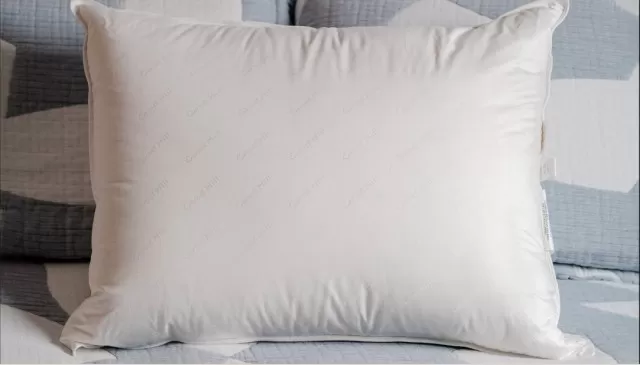Keeping your pillows clean is essential as they can accumulate dirt, dust, sweat, bacteria, and even mold or mildew over time.

Regularly disinfecting and cleaning your pillows every few months is necessary to maintain freshness and eliminate germs.
Although pillows may appear large and challenging to clean, the process of washing and drying them is simpler than it may seem.
Our guide will provide you with instructions on how to wash pillows, maintain their cleanliness, and determine when it’s time to replace them. By following these tips, you can ensure that your pillows are thoroughly washed, properly dried, and perfectly fluffed.
Guide to Washing Pillows

Prepare Pillows for Washing:
Remove any covers or pillowcases before washing and check the manufacturer’s instructions.
Unless the pillow is labeled as dry-clean only, you can follow these steps for washing and drying.
Machine-Wash Pillows:
Most down and synthetic pillows can be washed in a washing machine and dried on low heat.
Ensure that the water temperature is set to 140°F or higher to effectively eliminate dust mites. Consider adding an extra spin cycle to remove excess moisture.
Choose the Right laundry detergent:
Opt for a fragrance-free laundry detergent when washing pillows.
Recommended options include Better Life’s natural laundry detergent, Charlie’s Soap laundry powder, or a homemade recipe of soap flakes, baking soda, washing soda, and borax. It’s essential to follow the manufacturer’s detergent recommendations to prevent residue buildup and clumping.
Ensure Proper Drying:
Thoroughly dry the pillows to prevent the reintroduction of mildew, bacteria, and dust mites.
Place the pillows in the dryer on a low heat setting, checking them every 20 to 30 minutes for even drying. To enhance fluffiness, use dryer balls or a tennis ball placed inside a sock.
Avoid Overloading the Machine:
Wash and dry at least two pillows together to maintain balance in the washing machine.
However, do not overcrowd the machine, as pillows need ample water for effective cleaning and sufficient space for thorough drying.
By following these steps, you can successfully wash and dry your pillows, ensuring they are fresh, clean, and free from allergens.
Tips for Maintaining Clean Pillows

Fluff Pillows Daily:
Regularly fluffing your pillows helps keep them in good condition.
Spend a few minutes each day fluffing your bed and sofa pillows to remove dust and restore their shape.
Vacuum Foam Pillows:
Foam pillows should not be washed.
Instead, sprinkle them with cornstarch, let them sit for an hour or more, and then thoroughly vacuum both sides of the pillow.
Refresh Pillows in the Dryer:
Every few months, place your pillows in the dryer on the “air fluff” setting to eliminate dust.
For added freshness, include a vinegar-dampened washcloth to help kill mold and mildew.
Use Pillow Protectors:
Using removable pillow protectors gives you more time between deep cleanings.
Remove and machine-wash the protectors in hot water once a month to keep them clean.
Replace Pillows After Two Years:
Even with regular cleaning, pillows should be replaced every two years.
Signs that indicate it’s time for a replacement include insufficient support, a lumpy and uncomfortable feel, or the presence of odors or stains that cannot be removed.
Conclusion
Ensuring the cleanliness of your pillows is crucial since they can accumulate dirt, dust, sweat, bacteria, and even mold or mildew over time. Regularly disinfecting and cleaning your pillows every few months is necessary to keep them fresh and free from germs.
Although pillows may appear large and challenging to clean, the process of washing and drying them is simpler than it might initially seem.
Our guide offers detailed instructions on how to wash pillows, maintain their cleanliness, and determine when it’s time to replace them. By following these tips, you can effectively wash and dry your pillows, ensuring they are thoroughly cleaned, adequately dried, and perfectly fluffed.
*The information is for reference only.